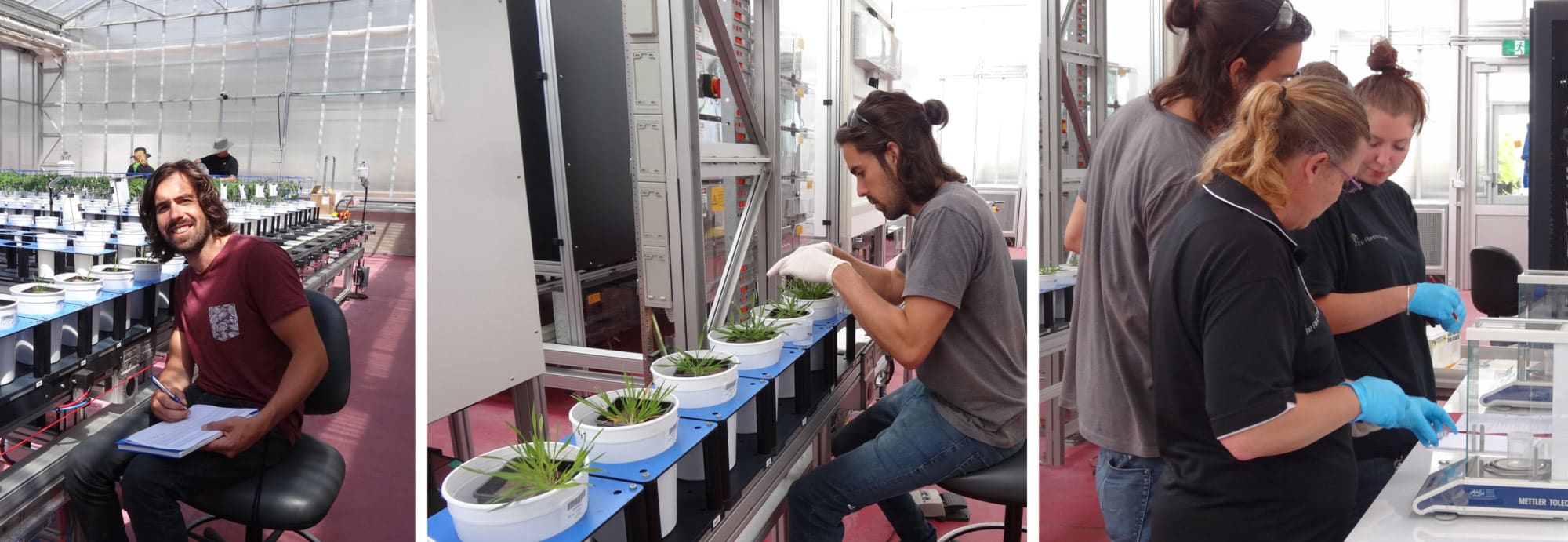Republished from the Australian Plant Phenomics Facility blog.
Arbuscular mycorrhizal (AM) partnerships are mutualisms between an estimated two-thirds of plants species and microscopic fungi that are ubiquitous in soils.
Since the 1950s there have been many studies into whether inoculation with AM fungi can improve plant vigour in agriculture and restoration, with many pot experiments (and some in the field) showing that to be the case. But it has become increasingly recognised that these results are difficult to replicate, to the point that PhD students are sometimes advised (in jest) to ‘never repeat a mycorrhizal experiment if you are satisfied with the results of the first one’!

In a new paper, Rohan Riley and colleagues from the Hawkesbury Institute, Western Sydney University, University of Adelaide and Australian Plant Phenomics Facility sought to discover why.
“This was a great collaborative project with Rohan, who was one of our Postgraduate Interns. It’s fantastic to see the results of this hard work shared with the science community”, said Dr Bettina Berger.
“As a PhD student with limited experience in greenhouse experiments, the highly controlled growth conditions, large-scale automation, digital imaging and software technology (high-throughput phenotyping) at the Australian Plant Phenomics Facility’s (APPF) Adelaide node provided me with the work-space, expertise and technical support to make a complicated experiment possible”, said Rohan.
“The high throughput phenotyping technology allowed for an unprecedented resolution and range of plant physiological changes in response to combinations of nutrient level, salinity and two different fungal communities that would not otherwise be achievable in a regular greenhouse”.

We know that soil fertility plays an important role, with positive responses more likely under phosphorus-limiting conditions. Plant species can be important as well, with C4 species tending to respond more strongly than C3 species. But the occurrence of highly variable (and sometimes negative) responses within a single plant species inoculated with AM fungi is an important factor limiting potential exploitation of AM fungi in agriculture and remediation. Unpredictable plant benefits also hinder the inclusion of these fungi in screens for beneficial plant traits.
“Rohan’s work is an important step in resolving this issue, brought about as a result of using a model plant species (Brachypodium distachyon) and the imaging facilities available at APPF”, said Assoc Professor Jeff Powell.
“By taking into account the physiological tendency of the plant to put carbon and nutrients into either growth or storage and measuring growth of plants on a daily basis as opposed to just in a single endpoint harvest, the result of the interaction with AM fungi becomes more predictable”.
The team’s research discovered plants that grow quickly benefit more from AM fungi under low phosphorus, but are also strongly negatively affected when low nitrogen leads to competition between the plant and fungus. Plants that grow slowly and store the resources that they assimilate are not very responsive to AM fungi at all, regardless of soil fertility.
“Our results attest strongly to a mechanism in plants by which plant genotype‐specific resource economics drive phenotypic outcomes during AM symbioses”, said Rohan.
“With further research into these interactions, we believe a better understanding of the physiology and ecology of AM partnerships can lead to improved varietal selection and productivity gains, particularly in marginal environments”.
Read the full paper, “Resource allocation to growth or luxury consumption drives mycorrhizal responses”.
Find out more about Rohan’s research here.
Find out how you can apply for a Postgraduate Internship Award with the Australian Plant Phenomics Facility here.
